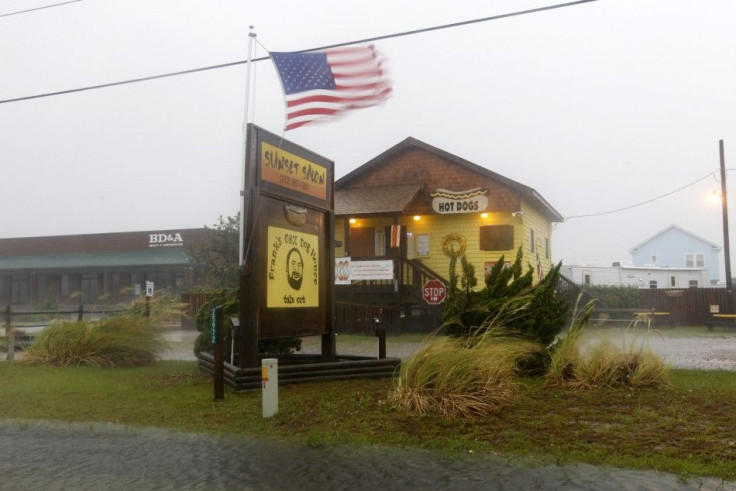Hurricane Irene Update: Three Deaths Reported in North Carolina

At least three people have been killed in North Carolina by Category-1 hurricane Irene, which has also knocked out power to more than 227,000 homes and businesses, suffering from 85 mph winds.
Officials in Nash County –which is inland, north of Raleigh -- said a local man died after he was crushed by a large tree limb outside his home that was cracked by the storm.
Another man, in Onslow County, a few miles inland in the southern part of the state had a heart attack and died while putting up protective plywood on his house.
A third man, reported missing in the Cape Fear River in Castle Hayne, may also be a casualty of the storm.
According to local reports, severe flooding has struck several towns, particularly in New Bern, a town of 30,000, about 35 miles from the Atlantic Coast.
New Bern officials told local media the city has been placed under a state of emergency and that 60 percent of its residents are without power.
At 5 a.m. Saturday, a 7-foot storm surge appeared at Fairfield Harbor, just east of New Bern.
We have had a lot of coastal flooding, a lot of storm surge, a lot of trees and power lines down across Eastern North Carolina, said National Weather Service meteorologist Casey Dail, according to local reports.
North Carolina governor Bev Perdue has warned residents along the coast and further inland to remain indoors, given that powerful winds, torrential rains and storm surges will batter the area all Saturday at least.
We have had reports of folks who are beginning to venture out, Purdue said in a press briefing. You endanger your safety and the safety of the first responders who might come and try to rescue you. ... Stay safe.
As soon as the weather eases, Purdue said she will deploy more than 200 Highway Patrol officers, 285 National Guard troops and other local police officers to the coast to help with emergency services.
Elsewhere, ocean piers have collapse and at least ten major roads in Eastern North Carolina were closed due to flooding.
We know those road closures may last for several hours, Perdue said.
In addition, witnesses have claimed they saw three tornadoes, including one that destroyed the roof of business near Belhaven in Beaufort County.
Irene made landfall Saturday morning at about 7:30 a.m. on the coast of North Carolina, bringing torrential rains and powerful winds.
The National Hurricane Center (NHC) reported that Irene had weakened to a Category-1 storm when it smashed into Cape Lookout, a natural barrier island 11 miles southeast of Beaufort, carrying winds of 85 mph and wind gusts of 90.
Damage from the storm has reached deeply into the state of North Carolina – heavy rainfall has been reported in Richmond and Anson Counties, far inland; with power outages recorded in Raleigh. However, the financial hub of Charlotte is expected to miss the rain.
At Currituck County, in the northernmost part of the Outer Banks, some power outages have been reported.
A local official told reporters: “[The surf on the beach is clawing at the dune]. It's kind of early for that. We are going to have some significant storm surge.
In Nags Head, also on the northern edge of the Outer Banks, reportedly about one-third of residents remained in defiance of the evacuation orders. Power has stayed on, but trees have fallen and some flooding has occurred.
High winds of up to 70 mph have reportedly knocked out power and damaged homes and stores in Washington, N.C., along the Pamlico River. Beaufort County is on flood watch,
Casey Dail, a meteorologist with the National Weather Service based in Wilmington, N.C., told media: [Irene] is still a Category 1 hurricane, a strong storm. We have reports of wind gusts of up to 115 miles per hour. We have had a lot of coastal flooding, a lot of storm surge, a lot of trees and power lines down across Eastern North Carolina.
Forecasters believe the storm will continue to pass through the western edge of North Carolina, then move back into the Atlantic Ocean, before making a second landfall in Long Island on Sunday.
Irene is next expected to impact the Hampton Roads region of southeast Virginia, an area very vulnerable to flooding.
The hazards are still the same, said National Hurricane Center hurricane specialist Mike Brennan. The emphasis for this storm is on its size and duration, not necessarily how strong the strongest winds are.
Up and down the east coast, at least 2.3-million people have been ordered to evacuate, including 1 million in New Jersey, 315,000 in Maryland, 300,000 in North Carolina, 200,000 in Virginia and 100,000 in Delaware.
This is probably the largest number of people that have been threatened by a single hurricane in the United States, said Jay Baker, geography professor at Florida State University, according to reports.
© Copyright IBTimes 2024. All rights reserved.





















